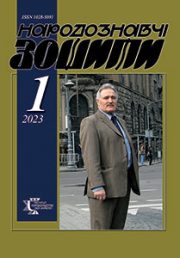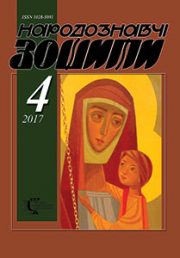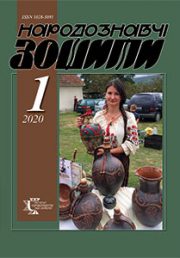The Ethnology Notebooks. 2019, 1 (145), 103—112
UDK 371.671.1
DOI https://doi.org/10.15407/nz2019.01.103
URSU Valentina
ORCID ID: http://www.upsc.md
PhD in History,
Univ. Head of the Department of Geography and Cultural Heritage
State Pedagogical University «Ion Creanga», 1,
Iona Creanga str., MD-2069, Chisinau, Republic of Moldova
Contacts: e-mail: ursuvalentina@yahoo.com
Abstract. In the present study we analyse several history books for secondary schools, elaborated by the authors of the Republic of Moldova and edited during the period of 1995—2014. We examine the criteria submitted for a school manual, as well as the didactic support, the cultural contents and the tasks proposed to the pupils. The authors of the textbooks are established scholars in the field of history, university and school teachers with a rich pedagogical experience. It has been found that textbooks allow pupils to get acquainted with more achievements of material culture: settlements, dwellings, occupations, clothing, folk traditions, some aspects of spiritual life, heritage remains preserved to this day. Although the textbooks give less space to the lessons devoted to everyday life, in comparison with political and economic life, students have the opportunity to develop skills to research, analyse and interpret primary sources, texts, images, etc. The contents of textbooks express the fundamentals of identity, moral and aesthetic values of nations.
Keywords: school textbooks, patrimony, everyday life, material vestiges, occupations, clothing, spiritual culture.
Received 6.12.2018
REFERENCES
Ann, Low-Beer (1997). Council of Europe and History in School. Strasbourg [in Romanian].
Musteatsa, S. (2006). How to elaborate and analyze school textbooks. Chisinau: Cartdidact [in Romanian].
Cherbushka, P., Haheu, V., Gontsa, Gh., & Petrovski, N. (2011). The universal history. Manual for cl. and yeah. Chisinau: Science [in Romanian].
Gontsa, Gh., Parasca, P., Cherbushka, P., Haheu, V., & Petrovski, N. (2000). The universal history. History of Romanians. Manual for cl. and yeah. Chisinau: Science [in Romanian].
Nekuletsa, I., Potlog, V., & Arnaut, T. (2000). History. The ancient and ancient age. Manual for cl. and yeah. Chisinau: Light [in Romanian].
Popovich, C., Popovich, A. History. (2005). Manual for cl. V. Chisinau: Lumina [in Romanian].
Dragnev, D., Cocarla, P., Gontsa, Gh., & Dragnev, E. (2001). The universal history and the Romanians. Manual for cl. VI. Chisinau: Science [in Romanian].
Dragnev, D., Drachenberg, C., & Ojog, I. (2011). Universal History. History of Romanians. Modern age. Manual for cl. VII. Chisinau: Science [in Romanian].
Drachenberg, C., Chertan, E., Cozma, V., & Cerbushka, P. (2004). Universal history. Modern age. Part II. Teacher’s handbook for cl. And VIII. Chisinau: International Prut [in Romanian].
Boico, P., Cinciley, V., & Veveritsa, M. (2006). History. Manual for cl. and VIII. Chisinau: Pedagogic Universe [in Romanian].
Kicush, N., Danu, E., Dragnev, D., & Negrey, I. (2004). The History of Romanians. Modern age. Part II (1850—1918). Teacher’s handbook for cl. and VIII. Chisinau: International Prut [in Romanian].
History (2009). The Modern Age (1850—1918). Manual for cl. and VIII. Varta, I., Sharov, I., Ojog, I. et. al. Chisinau: Cartdidact [in Romanian].
Sharov, I., Cashu, I., Dobzeu, M., & Cerbushka, P. (2013). Romanian History and Universal.
Manual for cl. IX. Chisinau: Cartdidact [in Romanian].
Petrenku, A. (2000). Contemporary universal history, 1918—2000. Manual for cl. IX. Chisinau: Prometheus [in Romanian].






